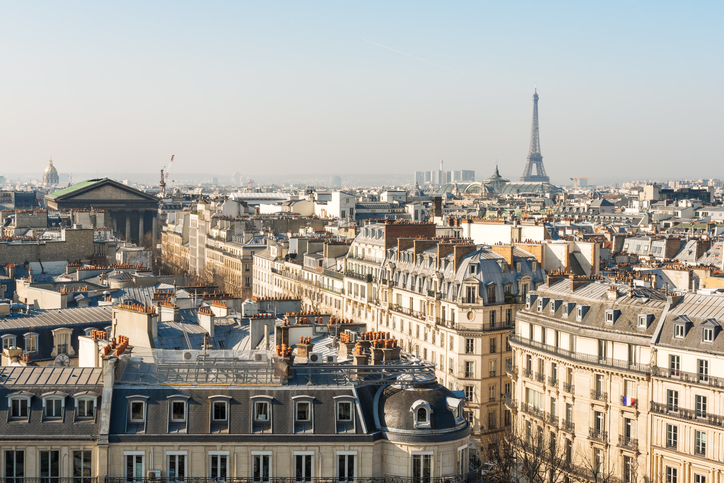The Meme Stock Trade Is Far From Over
It has now been half a year, and the core “meme stocks” are still trading at outrageous levels.
It seemed to be only a matter of time.
When GameStop (ticker: GME), BlackBerry (BB), and even the desiccated carcass of Blockbuster suddenly sprang to life in January, the clock was already ticking for when they would crash again. Would it be hours, days, or weeks?
It has now been half a year, and the core “meme stocks” are still trading at levels considered outrageous by people who have studied them for years. New names like Clover Health Investments (CLOV) and Newegg Commerce (NEGG) have recently popped up on message boards, and their stocks have popped, too.
The collective efforts of millions of retail traders—long derided as “the dumb money”—have successfully held stocks aloft and forced naysayers to capitulate.
That is true even as the companies they are betting on have shown scant signs of transforming their businesses, or turning profits that might justify their valuations. BlackBerry burned cash in its latest quarter and warned that its key cybersecurity division would hit the low end of its revenue guidance; the stock dipped on the news but has still more than doubled in the past year.
While trading volume at the big brokers has come down slightly from its February peak, it remains two to three times as high as it was before the pandemic. And a startling amount of that activity is occurring in stocks favoured by retail traders. The average daily value of shares traded in AMC Entertainment Holdings (AMC), for example, reached $13.1 billion in June, more than Apple’s (AAPL) $9.5 billion and Amazon.com’s (AMZN) $10.3 billion.
Even as the coronavirus fades in the U.S., most new traders say they are committed to the hobby they learned during lockdown—58% of day traders in a Betterment survey said they are planning to trade even more in the future, and only 12% plan to trade less. Amateur pandemic bakers have stopped kneading sourdough loaves; traders are only getting hungrier.
A sustained bear market would spoil such an appetite, as it did when the dot-com bubble burst. For now, dips are reasons to hold or buy.
“I’ve seen that the ‘buy the dip’ sentiment hasn’t relented for a moment,” wrote Brandon Luczek, an electronics technician for the U.S. Navy who trades with friends online, in an email to Barron’s.
The meme stock surge has been propelled by a rise in trading by retail investors. In 2020, online brokers signed clients at a record pace, with more than 10 million people opening new accounts. That record will almost certainly be broken in 2021. Brokers had already added more than 10 million accounts less than halfway into the year, some of the top firms have disclosed.
Meme stocks are both the cart and the horse of this phenomenon. Their sudden price spikes are driven by new investors, and then that action drives even more new people to invest. Millions of people downloaded investing apps in late January and early February just to be a part of the fun. A recent Charles Schwab (SCHW) survey found that 15% of all current traders began investing after 2020.
The most prominent player in the surge is Robinhood, which said it had added 5.5 million funded accounts in the first quarter alone. But it isn’t alone. Fidelity, for instance, announced that it had attracted 1.6 million new customers under the age of 35 in the first quarter, 223% more than a year before.
Under pressure from Robinhood’s zero-commission model, all of the major brokers cut commissions to zero in 2019. That opened the floodgates to a new group of customers—one that may not have as much spare cash to trade but is more active and diverse than its predecessors. And the brokers are cashing in. Fidelity is hoping to attract investors before they even have driver’s licenses, allowing children as young as 13 to open trading accounts. Robinhood is riding the momentum to an initial public offering that analysts expect to value it at more than 10 times its revenue.
These new customers act differently than their older peers. For years, there was a “big gravitation toward ETFs,” says Chris Larkin, head of trading at E*Trade, which is now owned by Morgan Stanley (MS). But picking single stocks is clearly “the big story of 2021.”
To be sure, equity exchange-traded funds are still doing well, as investors around the world bet on the pandemic recovery and avoid weak bond yields.
But ETFs don’t light up the message boards like stocks do. Not that it has been a one-way ride for the top names. GameStop did dip in February, and Wall Street enjoyed a moment of schadenfreude. It didn’t last.
“Like cicadas, meme traders returned in a wild blaze of activity after being seemingly underground for several months,” wrote Steve Sosnick, chief strategist at Interactive Brokers. Sosnick believes that the meme stocks tend to trade inversely to cryptocurrencies, because their fans rotate from one to the other as the momentum shifts.
“I don’t think it’s strictly a coincidence that meme stocks roared back to life after a significant correction in Bitcoin and other cryptocurrencies,” he wrote.
Sosnick considers meme stocks a “sector unto themselves,” one that he segregates on his computer monitor away from other stock tickers.
Indeed, Wall Street’s reaction to the meme stock revolution has been to isolate the parts of the market that the pros deem irrational. Most short sellers won’t touch the stocks, and analysts are dropping coverage.
But Wall Street can’t swat the retail army away like cicadas, or count on them disappearing for the next 17 years. Stock trading has permanently shifted. This year, retail activity accounts for 24% of equity volume, up from 15% in 2019. Adherents to the new creed are not passive observers willing to let Wall Street manage the markets.
“What this really reflects is a reversal of the trends that we saw toward less and less engagement with individual companies,” says Joshua Mitts, a professor at Columbia Law School specializing in securities markets. “Technology is bringing the average investor closer to the companies in which he or she invests, and that’s just taking on new and unpredictable forms.”
It is now changing the lives of those who got in early and are still riding the names higher.
Take Matt Kohrs, who had invested in AMC Entertainment early. He quit his job as a programmer in New York in February, moved to Philadelphia, and started streaming stock analysis on YouTube for seven hours a day.
With 350,000 YouTube followers, it’s paying the bills. With his earnings from ads and from the stock, Kohrs says he can pull down roughly the same salary he made before. But he also knows that relying on earnings from stocks like this is nothing like a 9-to-5 job.
“The swings you get can definitely make you feel some sort of way,” he says.
Companies are starting to react more aggressively, too. They are either embracing their new owners or paying meme-ologists to understand the emoji-filled language of the new Wall Street so they can ward them off or appease them.
AMC even canceled a proposed equity raise this past week because the company apparently didn’t like the vibes it was getting from the Reddit crowd. AMC has already quintupled its share count over the past year. CEO Adam Aron tweeted that he had seen “many yes, many no” reactions to his proposal to issue 25 million more shares, so it will be canceled instead of being presented for a vote at AMC’s annual meeting later this month. The company did not respond to a question on how it had polled shareholders.
Forget the boardroom. Corporate policy is now being determined in the chat room.
Big investors are spending more time tracking social-media discussions about stocks. Bank of America found in a survey this year that about 25% of institutions had already been tracking social-media sentiment, but that about 40% are interested in using it going forward.
In the past few months, Bank of America, Morgan Stanley, and J.P. Morgan have all produced reports on how to trade around the retail action, coming to somewhat different conclusions.
There can be “alpha in the signal,” as Morgan Stanley put it, but it can take some intense number-crunching to get there. Not all message-board chatter leads to sustained price gains, of course, and retail order flow cannot easily be separated from institutional flow without substantial data analysis. For investors with the tools to pinpoint which stocks retail investors are buying and which they are selling, J.P. Morgan suggests going long on the 20% of stocks with the most buying interest and short on the top 20% in selling interest.
For now, many of the institutions buying data on social-media sentiment appear to be trying to reduce their risks, as opposed to scouting new opportunities, according to Boris Spiwak of alternative data firm Thinknum, which offers products that track social-media sentiment. “They see it as almost like an insurance policy, to limit their downside risks,” he says.
For retail traders, the method isn’t always scientific. The action is sustained by a community ethos. And the force behind it is as much emotional and moral as financial.
New investors say they are motivated by a desire to prove themselves and punish the old guard as much as by profits. They learn from one another about the market, sometimes amplifying or debunking conspiracy theories about Wall Street. Some link the meme-stock movement to continued mistrust of big financial institutions stemming from the 2008 financial crisis.
“Wall Street brought our economy to its knees, and no one ever got in trouble for it,” says the 26-year-old Kohrs. “So, I think they view this as not only can we make money, but we can also make these hedge funds on Wall Street pay.”
Claire Hirschberg is a 28-year-old union organizer who bought about $50 worth of GameStop stock on Robinhood in January after hearing about it from friends. She liked the idea, but what really got her excited about it was the reaction of her father, a longtime money manager. “He was so mad I had bought GameStop and was refusing to sell,” she says, laughing. “And that just makes me want to hold it forever.”
Just like old Wall Street has rituals and codes, the new one does, too. A new investment banking employee learns quickly that you don’t wear a Ferragamo tie until after you make associate. You never leave the office until the managing director does, and you don’t complain about the hours. And the bad guys are the regulators and Sen. Elizabeth Warren, and not in that order.
The new trading desk—the apps that millions of retail traders now use and the message boards where they congregate—have unspoken rules, too. Publicly acknowledging financial losses is a valiant act, evidence of internal fortitude and belief in the group. You don’t take yourself seriously and you don’t police language. You are part of an army of “apes” or “retards.” You hold through the crashes, even if it means you might lose everything. And the bad guys are the short sellers, the market makers, and the Wall Street elites, in that order.
The group action is not just for moral support. The trading strategy depends on people keeping up the buying pressure to force a short squeeze or to buy bullish options that trigger what’s known as a gamma squeeze.
Many short sellers say they won’t touch these stocks anymore. But clearly, others aren’t taking that advice and are giving the meme movement oxygen by repeatedly betting against the stocks. AMC’s short interest was at 17% of the stock’s float in mid-June, down from 28% in January, but not by much.
As the price rises, the shorts can’t help themselves. They start “drooling, with flames coming out of their ears,” says Michael Pachter, a Wedbush Securities analyst who has covered GameStop for years. “What’s kind of shocked me is the definition of insanity, which is doing the same thing over and over and over again and hoping for a different outcome each time, and the shorts keep coming back,” he says. “And [GameStop bull] Keith Gill and his Reddit raiders keep squeezing them, and it keeps working.”
To beat the short sellers, the Reddit crowd needs to hold together, but the community has been showing cracks at times. The two meme stocks with the most determined fan bases—GameStop and AMC—still have enormous armies of core believers who do not seem easily swayed. But other names seem to have more-fickle backers. Several stocks caught up in the meme madness have come crashing down to earth. Bed Bath & Beyond (BBBY) spiked twice—in late January and early June—but now trades only slightly above its mid-January levels. People who bought during the upswings have lost money.
Distrust has spread, and some traders worry that wallstreetbets— the original Reddit message board that inspired the GameStop frenzy—has grown so fast that it has lost its original spirit, and potentially grown vulnerable to manipulation. Some have moved to other message boards, like r/superstonk, in hopes of reclaiming the old community’s flavor.
Travis Rehl, the founder of social-media tracking company Hype Equity, says that he tries to separate possible manipulators from more organic investor sentiment. Hype Equity is usually hired by public-relations firms representing companies that are being talked about online, he says. Now, he sees a growing trend of stocks that suddenly come up on message boards, receive positive chatter, and then disappear.
“It’s called into question what is a true discussion versus what is something that somebody just wants to pump,” he says. The moderators of wallstreetbets forbid market manipulation on the platform, and Rehl say they appear to work hard to police misinformation. The moderators did not respond to a request from Barron’s for comment.
“If you can create enough buzz to get a stock that goes up 10%, 20%, even 50% in a short period of time, there’s a tremendous incentive to do that,” Sosnick says.
The Securities and Exchange Commission is watching for funny business on the message boards. SEC Chairman Gary Gensler and some members of Congress have discussed changing market rules with the intention of adding transparency protecting retail traders—although changes could also anger the retail crowd if they slow down trading or make it more expensive.
Regulations aren’t the only thing that could deflate this trend. Dan Egan, vice president of behavioural finance and investing at fintech Betterment, thinks the momentum may run out of steam in September. Even “apes” have responsibilities. “Kids start going back to schools; parents are free to go to work again,” he says. “That’s the next time there’s going to be some oxygen pulled out of the room.”
Traditional investors may be tempted to write off the entire phenomenon as temporary madness inspired by lockdowns and free government money. But that would be a mistake. If zero-commission brokerages and fun with GameStop broke down barriers for millions of new investors to open accounts, it’s almost certainly a good thing, as long as most people bet with money they don’t need immediately. Many new retail traders say they are teaching themselves how to trade, and have begun to diversify their holdings.
In one form or another, this is the future client base of Wall Street.
Arizona State University professor Hendrik Bessembinder published groundbreaking research in 2018 that found that “a randomly selected stock in a randomly selected month is more likely to lose money than make money.” In short, picking single stocks and holding a concentrated portfolio tends to be a losing strategy.
Even so, he’s encouraged by the new wave of trading. “I welcome the increase in retail trading, the idea of the stock market being a place with wide participation,” Bessembinder says. “Economists can’t tell people they shouldn’t get some fun.”
Connor Smith contributed reporting.
Reprinted by permission of Barron’s. Copyright 2021 Dow Jones & Company. Inc. All Rights Reserved Worldwide. Original date of publication: July 11, 2021
 Copyright 2020, Dow Jones & Company, Inc. All Rights Reserved Worldwide. LEARN MORE
Copyright 2020, Dow Jones & Company, Inc. All Rights Reserved Worldwide. LEARN MORE
This stylish family home combines a classic palette and finishes with a flexible floorplan
Just 55 minutes from Sydney, make this your creative getaway located in the majestic Hawkesbury region.
Continued stagflation and cost of living pressures are causing couples to think twice about starting a family, new data has revealed, with long term impacts expected
Australia is in the midst of a ‘baby recession’ with preliminary estimates showing the number of births in 2023 fell by more than four percent to the lowest level since 2006, according to KPMG. The consultancy firm says this reflects the impact of cost-of-living pressures on the feasibility of younger Australians starting a family.
KPMG estimates that 289,100 babies were born in 2023. This compares to 300,684 babies in 2022 and 309,996 in 2021, according to the Australian Bureau of Statistics (ABS). KPMG urban economist Terry Rawnsley said weak economic growth often leads to a reduced number of births. In 2023, ABS data shows gross domestic product (GDP) fell to 1.5 percent. Despite the population growing by 2.5 percent in 2023, GDP on a per capita basis went into negative territory, down one percent over the 12 months.
“Birth rates provide insight into long-term population growth as well as the current confidence of Australian families,” said Mr Rawnsley. “We haven’t seen such a sharp drop in births in Australia since the period of economic stagflation in the 1970s, which coincided with the initial widespread adoption of the contraceptive pill.”
Mr Rawnsley said many Australian couples delayed starting a family while the pandemic played out in 2020. The number of births fell from 305,832 in 2019 to 294,369 in 2020. Then in 2021, strong employment and vast amounts of stimulus money, along with high household savings due to lockdowns, gave couples better financial means to have a baby. This led to a rebound in births.
However, the re-opening of the global economy in 2022 led to soaring inflation. By the start of 2023, the Australian consumer price index (CPI) had risen to its highest level since 1990 at 7.8 percent per annum. By that stage, the Reserve Bank had already commenced an aggressive rate-hiking strategy to fight inflation and had raised the cash rate every month between May and December 2022.
Five more rate hikes during 2023 put further pressure on couples with mortgages and put the brakes on family formation. “This combination of the pandemic and rapid economic changes explains the spike and subsequent sharp decline in birth rates we have observed over the past four years,” Mr Rawnsley said.
The impact of high costs of living on couples’ decision to have a baby is highlighted in births data for the capital cities. KPMG estimates there were 60,860 births in Sydney in 2023, down 8.6 percent from 2019. There were 56,270 births in Melbourne, down 7.3 percent. In Perth, there were 25,020 births, down 6 percent, while in Brisbane there were 30,250 births, down 4.3 percent. Canberra was the only capital city where there was no fall in the number of births in 2023 compared to 2019.
“CPI growth in Canberra has been slightly subdued compared to that in other major cities, and the economic outlook has remained strong,” Mr Rawnsley said. “This means families have not been hurting as much as those in other capital cities, and in turn, we’ve seen a stabilisation of births in the ACT.”
This stylish family home combines a classic palette and finishes with a flexible floorplan
Just 55 minutes from Sydney, make this your creative getaway located in the majestic Hawkesbury region.






















